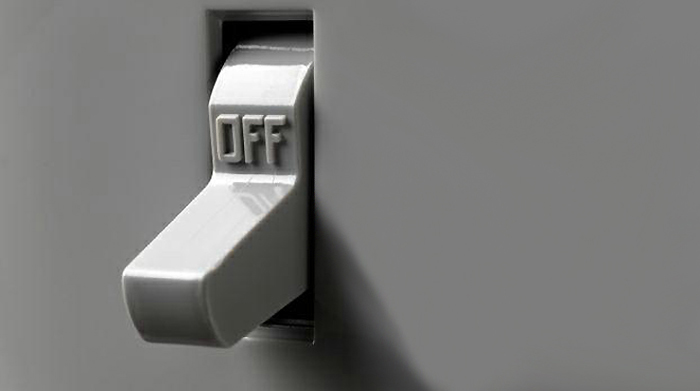How a Wireless Outage Impacts Emergency Restoration

When it comes to communications technology, the ‘good old days’ of the 70’s and 80’s weren’t really, well, all that good. Landline phones were wired into walls, low-band radios had issues with static, and pagers were extremely inefficient. Sure, Ma Bell encouraged us to “reach out and touch someone,” but doing so was often easier said than done!
Fast forward to 2015, and it’s clear that communications technology has come a long way – everything is connected, and we have the power to communicate wherever and whenever we want. For utilities, this has enabled real-time, bidirectional communication with personnel and devices in the field, and allows outage management systems (OMS) and other utility systems to collect near real time information, adjust system operation, and provide pertinent information to customers and employees.
Obviously this has dramatically improved the efficiency and effectiveness of emergency response and restoration. But it also presents new challenges. You see, these communications are generally enabled via wireless and/or cellular networks. But what happens if there is a wireless outage during an emergency situation?
How a Wireless Outage Affects Utility Systems, Personnel and Safety
Due to the interdependency of utility systems and wireless communications, a network failure can lead to a domino effect that can dramatically slow restoration progress. A widespread communications network failure can prevent damage assessors and restoration crews from efficiently relaying information, which in turn reduces the accuracy of data in the OMS and can lead to inefficient coordination of personnel.
Specifically, when connectivity is disrupted, the OMS’ ability to monitor the number of crews allocated to each outage, as well as where those crews are located, is severely hindered and subsequently reduces the system’s ability to accurately track repairs and generate ETRs (estimated restoration times). Simply put, OMS could essentially be rendered useless if wireless connectivity is interrupted for a long period of time.
And it’s not just systems that can be impacted. A wireless outage might prevent an employee from reporting a new emergency issue, or might prevent critical communications with police, fire, and other emergency personnel. A network outage might also prevent the tracking of, and response to, downed wires, which could potentially result in an increase in unsafe conditions (not to mention the fact that utility regulators often mandate the reporting of this information, and fines can ensue if response times are not met).
Frequency of Occurrence
The cold hard truth is that the frequency of wireless network outages is on the rise. This is partially due to America’s growing usage of, and reliance on, wireless connectivity, and partially due to the increase in weather severity over time.
It’s not uncommon for widespread network outages to occur as a result of physical damage to infrastructure (the towers themselves, or the cables that connect cellphone antennas to the main network) or a power failure to the antennas and base stations. And although most cell towers have battery backup power, this generally only lasts for 2-4 hours depending on network congestion. Far fewer cell sites have fuel-based backup generation.
Recent examples highlight this increasing frequency. In 2012, Superstorm Sandy knocked out 25% of the wireless cell towers across 10 states, dramatically hampering restoration efforts. In June 2015, the Verizon network went down across much of southern New Jersey and southeastern Pennsylvania for 12 hours, impacting several utilities’ response to a “macroburst” that caused over 550,000 outages at its peak. And there are hundreds of smaller, more localized network outages that occur every year.
Mitigation Strategies
The most important thing utilities can do to help mitigate this risk is to develop, in conjunction with the wireless / cellular network operators, a wireless communications disaster recovery plan that complements and coordinates with their system restoration plan. Specific elements of this plan might include some or all of the following:
- Identification of alternate communication methods that could be activated if the primary network goes down, such as HAM radio, which ironically is one of the most resilient methods when it comes to operating during a power outage despite the fact that it is an older technology. Other low-tech options might include using radios, landlines, paper forms, or even runners.
- Utilization of expanded internal networks such as private optic networks or microwave facilities to transmit data when the communications network fails.
- Coordination with the wireless network operators to prioritize the restoration of the network so it gets restored at the same time as the electrical system.
- Provision of emergency generators to keep central offices, cell phone sites, or other critical systems associated with the wireless network operating during the outage.
- Utilization of the Wireless Priority System, which allows utilities that are “on the list” to receive priority access during periods of extreme cellular network congestion. Priority users are said to experience an average 95% success rate making calls using the prioritized system during emergency events.
Bottom Line
When it comes to utility operations, wireless connectivity is both a blessing and a curse. While the technology dramatically improves the efficiency and effectiveness of outage communications, resource allocation, and outage management, a network failure can bring down the entire house. That said, it’s definitely possible to reduce the impact of a wireless outage by considering some or all of the mitigation strategies above.

